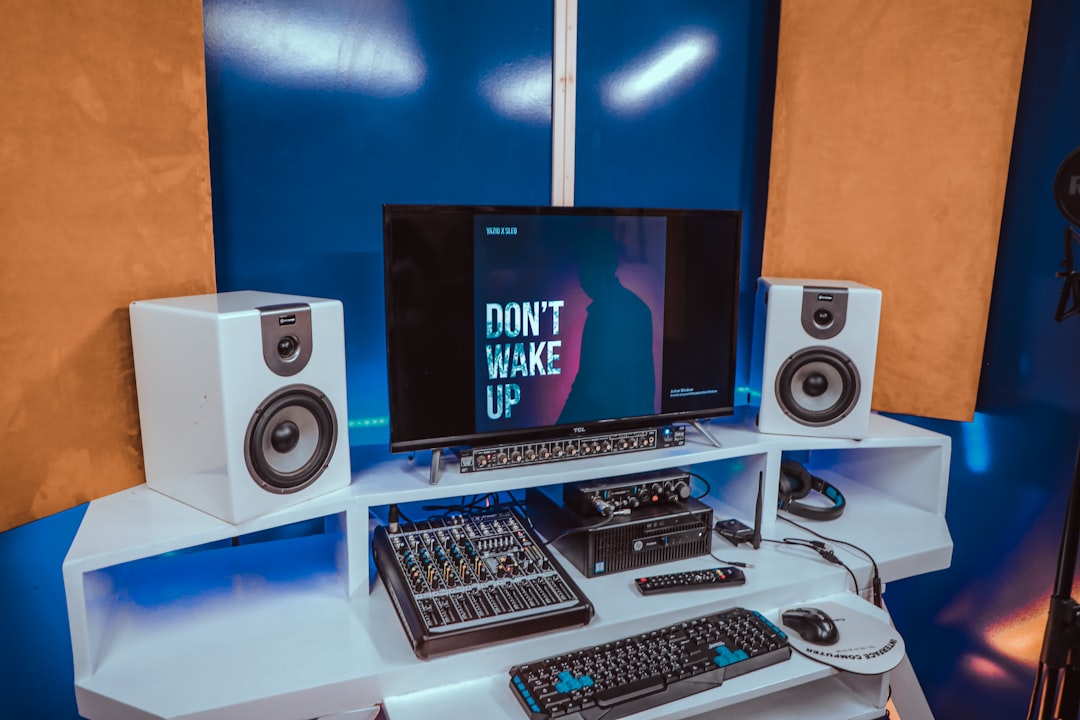The Easiest Musical Instruments for Beginners: A Complete Guide to Starting Your Music Journey
Embarking on a musical journey? Discover the easiest instruments that welcome beginners of all ages with affordability, accessibility, and ample learning support.
Key Takeaways
- Beginners benefit most from instruments that balance simplicity, affordability, and learning resources.
- The ukulele, recorder, keyboard, and harmonica stand out as top entry-level choices with low barriers.
- Voice and auxiliary percussion offer universally accessible ways to engage with music immediately.
- Choosing the right instrument depends on age, interest, portability, and community availability.
- Digital tools and online content significantly support beginner progress across most instruments.
Table of Contents
- 1. Ukulele: The Easiest String Instrument for Beginners
- 2. Recorder: The Lightweight and Affordable Beginner’s Woodwind
- 3. Keyboard: A Versatile Instrument for Melody and Music Theory
- 4. Acoustic Guitar: Accessible, Affordable, and Widely Supported
- 5. Harmonica: The Portable and Beginner-Friendly Wind Instrument
- 6. Electronic Drums: Quiet, Easy, and Digitally Integrated Rhythm
- 7. Auxiliary Percussion: Simple Rhythm Instruments for Instant Participation
- 8. Voice: The Most Accessible Instrument Everyone Owns
- 9. How to Choose the Right Beginner Instrument for You or Your Child
- 10. Conclusion: Affordable, Easy, and Rewarding Beginner Instruments Exist for Everyone
- FAQ
1. Ukulele: The Easiest String Instrument for Beginners
Compact, gentle on fingers, and affordable, the ukulele is a superb choice for a first string instrument.
With its small size and soft nylon strings, the ukulele invites beginners to start playing fast without finger discomfort. Starter models range from $30 to $100, making it budget-friendly.
- Simple chord shapes that beginners can grasp quickly.
- Strumming patterns help build rhythm and timing skills.
- Allows playing popular and recognizable songs within weeks.
- Lightweight design supports travel and spontaneous practice.
Numerous online tutorials and apps provide structured lessons. Plus, school programs and music groups create a welcoming community environment.
Summary
- Inexpensive and beginner-friendly.
- Quick to learn chords across all ages.
- Highly portable.
- Rich library of instructional content.
2. Recorder: The Lightweight and Affordable Beginner’s Woodwind
A mainstay in many classrooms, the recorder offers simplicity and quick reward for new wind players.
The recorder is small, light, and extremely affordable (often under $30). Its straightforward fingerings and clear tone enable beginners, including young children, to develop breath control and melody skills rapidly.
- Produces sound easily for even first-time players.
- Builds breath awareness and pitch precision.
- Intuitive finger patterns simplify learning melodies.
- Abundant free tutorials and sheet music accessible worldwide.
It’s an excellent low-risk starting point for learners ages 5 and up, supported by numerous educational programs and online resources such as Craft Music’s guide.
Summary
- One of the most affordable beginner instruments.
- Quick and easy sound production.
- Great for rhythm, pitch, and breath development.
- Popular and highly supported in education.
3. Keyboard: A Versatile Instrument for Melody and Music Theory
The keyboard introduces melody and harmony in a clear, visual way, making it ideal for beginners interested in music theory.
Digital pianos and keyboards start at about $50 and often include functionalities like built-in lessons and metronomes. Their linear key layout aligns naturally with music theory concepts, helping novices understand scales, chords, and harmony.
- Play melody and harmony simultaneously.
- Compatible with apps that offer real-time feedback.
- Portable options support flexible practice schedules.
- Used extensively in educational settings with structured curriculums.
For beginners eager to deepen musical understanding and performance, the keyboard is a powerful tool, with many supports detailed at the Sloan School of Music.
Summary
- Strong foundation for music theory.
- Affordable models with rich features.
- Integrates seamlessly with learning technology.
- Widely adopted in schools and group classes.
4. Acoustic Guitar: Accessible, Affordable, and Widely Supported
The acoustic guitar’s versatility and vast song repertoire make it a lasting choice for beginners ready to grow their skills.
While it has a moderately steeper learning curve than the ukulele, beginner guitars usually cost between $80 and $150 and offer access to a wide range of music styles. It’s excellent for building finger strength and coordination.
- Supports genres from rock to classical.
- Reasonably portable despite larger size.
- Strong presence of community lessons and online content.
- Great for learning rhythmic skills and fingerstyle techniques.
Beginners inspired by popular songs will find a rewarding path with the acoustic guitar. For further details, visit Merit Music’s beginner guide.
Summary
- Cost-effective entry into string instruments.
- Large and supportive learning community.
- Encourages skill growth through diverse playing styles.
- Portable enough for personal or group practice.
5. Harmonica: The Portable and Beginner-Friendly Wind Instrument
Small, affordable, and easy to play, the harmonica is perfect for musicians on the go.
With prices between $10 and $50, beginner diatonic harmonicas minimize playing off-key and are excellent for blues, folk, and country styles. They produce sound immediately, making early success motivating.
- Ultra-portable and budget-friendly.
- Minimal learning curve required to create pleasing tones.
- Robust online lesson availability, including tabs and video tutorials.
- Progression possible with advanced chromatic models.
Its intuitive design and growing digital lesson support make harmonica a favorite for spontaneous jam sessions. Learn more at Ditto Music.
Summary
- Compact and affordable wind instrument.
- Easy to produce good sounds fast.
- Extensive free online learning resources.
- Offers advancement opportunities.
6. Electronic Drums: Quiet, Easy, and Digitally Integrated Rhythm
Electronic drum kits provide a gentle volume and digital connectivity perfect for rhythm beginners.
Starting around $150, these kits fit small spaces and enable quiet practice without sacrificing the feel of real drums. They feature built-in beats, metronomes, and MIDI/USB ports to connect to apps for interactive lessons.
- Compact and noise-friendly compared to acoustic drums.
- Encourages rhythm development with integrated toolsets.
- Supports USB/MIDI connectivity for enhanced learning.
- Increasingly popular with digital-native learners.
While less common in in-person groups, online communities and virtual lessons boost accessibility. Visit Venice Music Blog for deeper insight.
Summary
- Low noise and space-friendly setup.
- Encourages rhythmic skill-building through features.
- Compatible with digital learning platforms.
- Appealing to tech-focused beginners.
7. Auxiliary Percussion: Simple Rhythm Instruments for Instant Participation
Tambourines, shakers, triangles, and maracas provide a direct and joyful introduction to rhythm for all ages.
These instruments usually cost between $10 and $50 and require no prior experience or music reading. They focus solely on timing and rhythm, making them ideal for very young learners or those hesitant about traditional instruments.
- Perfect for absolute beginners of any age.
- Builds rhythm and coordination without complexity.
- Lightweight and highly portable.
- Supported by educational and therapeutic programs worldwide.
Many video tutorials and rhythm exercises support beginners, and group settings enhance social music experience. Learn more from Ditto Music's beginner instruments guide.
Summary
- Extremely low cost and approachable for all.
- Focuses on essential rhythm and timing skills.
- Highly portable and simple to use.
- Excellent starting point to explore music.
8. Voice: The Most Accessible Instrument Everyone Owns
Your voice is the ultimate beginner instrument—free, flexible, and entirely personal.
Singing requires no equipment and is accessible at almost any age. It improves ear training, pitch accuracy, breath control, and emotional expression. Choirs and voice lessons provide excellent social and guided learning environments, welcoming children as young as seven.
- Sing simple melodies from the start to build confidence.
- Develops foundational musical skills applicable to other instruments.
- Widely supported by online exercises, apps, and community groups.
- Flexible for all ages and experience levels.
Explore vocal development through resources found at the Sloan School of Music and Merit Music.
Summary
- No cost or equipment needed.
- Accessible and effective for all ages.
- Builds core musical competencies.
- Backed by broad community and digital support.
9. How to Choose the Right Beginner Instrument for You or Your Child
Choosing the right instrument is a personal decision beyond just ease or price. Consider these factors:
- Age: Some instruments fit younger hands and developmental stages better (e.g., recorder from age 5, voice from age 7).
- Size & Dexterity: Ukuleles suit small hands, guitars demand stronger fingers.
- Interest & Motivation: Involve the learner in selection for sustained enthusiasm.
- Learning Resources: Pick instruments with strong online tutorials and community support.
- Community Access: Group lessons and ensembles can boost motivation and social skills.
Practical tips include renting before buying, exploring free tutorials to test interest, and starting with voice or percussion if uncertain. These approaches nurture excitement and encourage long-term progress.
10. Conclusion: Affordable, Easy, and Rewarding Beginner Instruments Exist for Everyone
Starting your music journey doesn’t require complexity or huge investment. Whether you choose the ukulele’s friendly chords, the keyboard’s versatile notes, the recorder’s simplicity, or the voice’s natural power, beginner instruments abound.
Supported by digital lessons and welcoming communities, these starter instruments ensure that music is open to all. Find what fits your goals and enjoy the magic of making music come alive.
Ready to begin? Check out quality beginner instruments and starter kits at your favorite music retailers to get going today.
FAQ
Q1: Which instrument is best for children just starting music?
The recorder and ukulele are excellent for young children, given their small size, ease of play, and affordability. The recorder is often introduced around age 5, while ukuleles suit slightly older children with sufficient finger dexterity.
Q2: Can adults start with these beginner instruments too?
Absolutely! Instruments like the ukulele, keyboard, harmonica, and voice are very accessible for adult beginners. Many learning resources specifically cater to adult learners.
Q3: How important is community and group learning for beginners?
Community and group learning can greatly enhance motivation, provide social support, and offer performance opportunities, which help maintain enthusiasm as skills develop.
Q4: What if I don’t want to buy an instrument right away?
You can rent instruments or borrow from friends or local libraries. Using free online tutorials can help ensure your interest before making a purchase.
Q5: Are online tutorials sufficient to learn a beginner instrument?
Many beginners succeed with online tutorials, especially those coupled with apps offering interactive feedback. However, combining online learning with occasional in-person instruction or group classes can accelerate progress.






